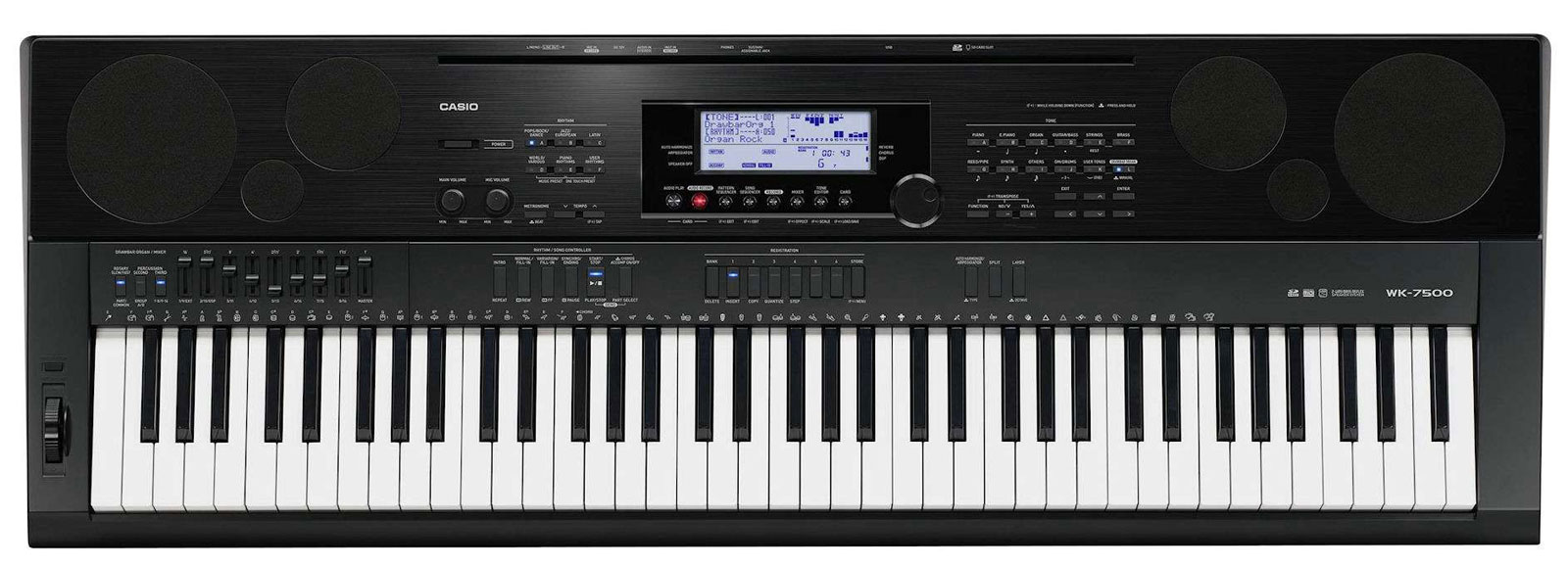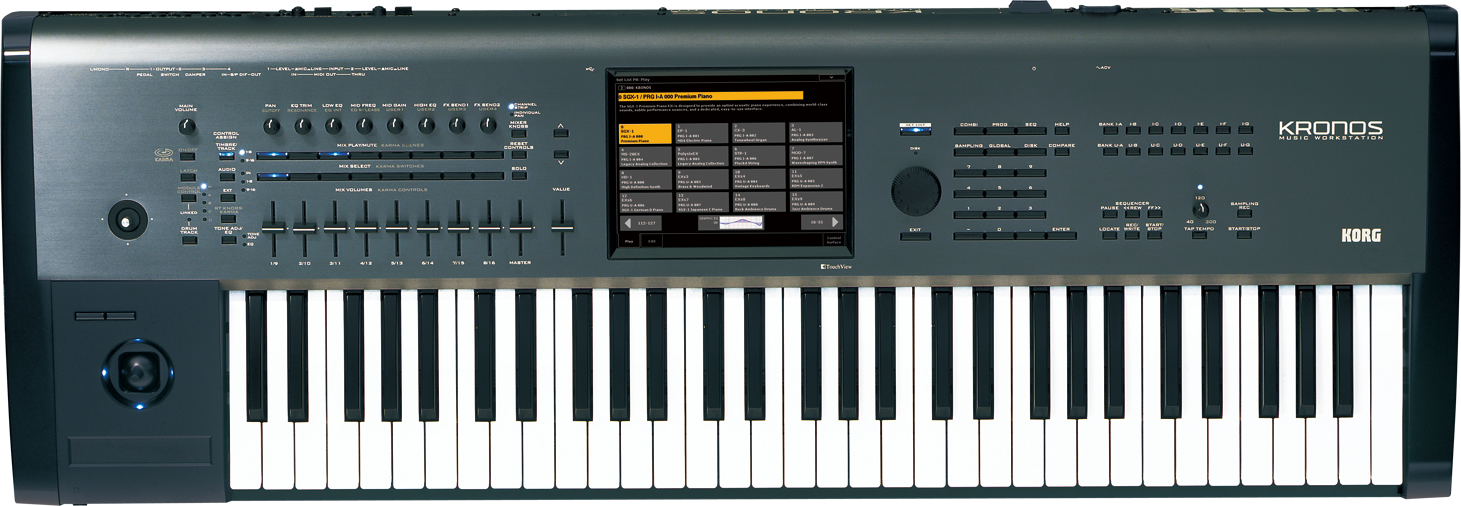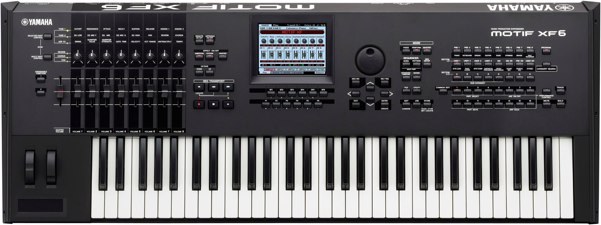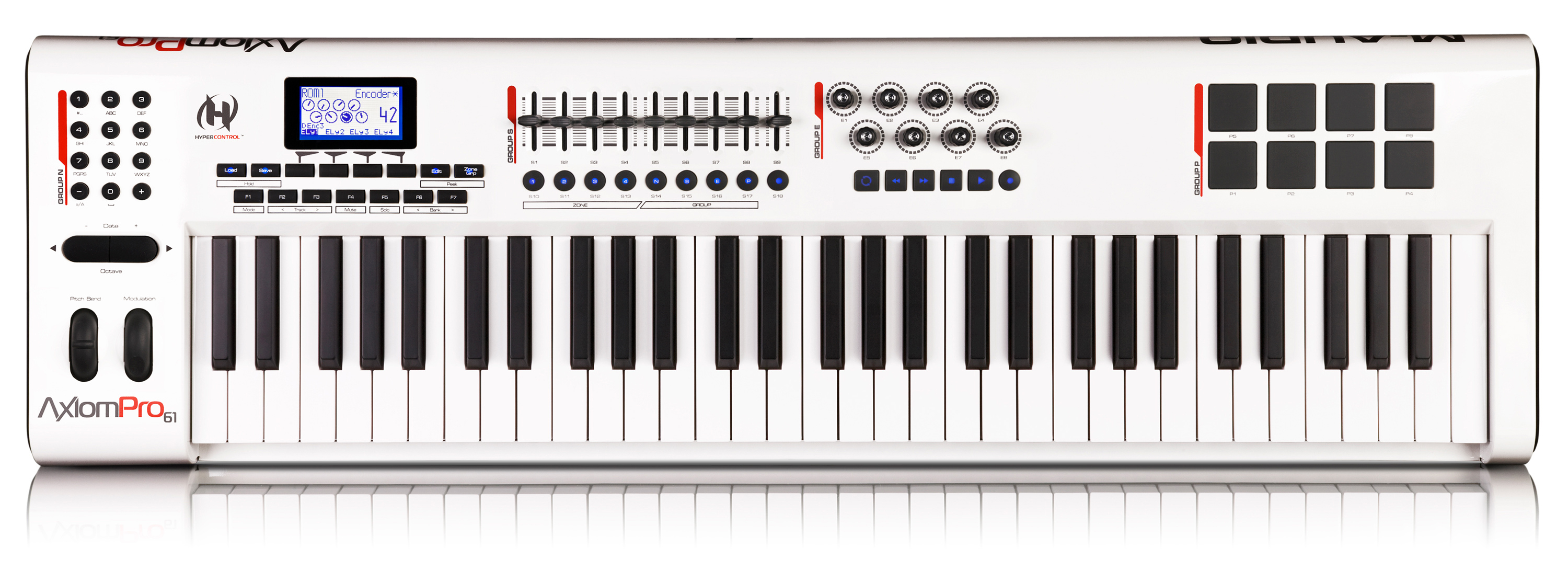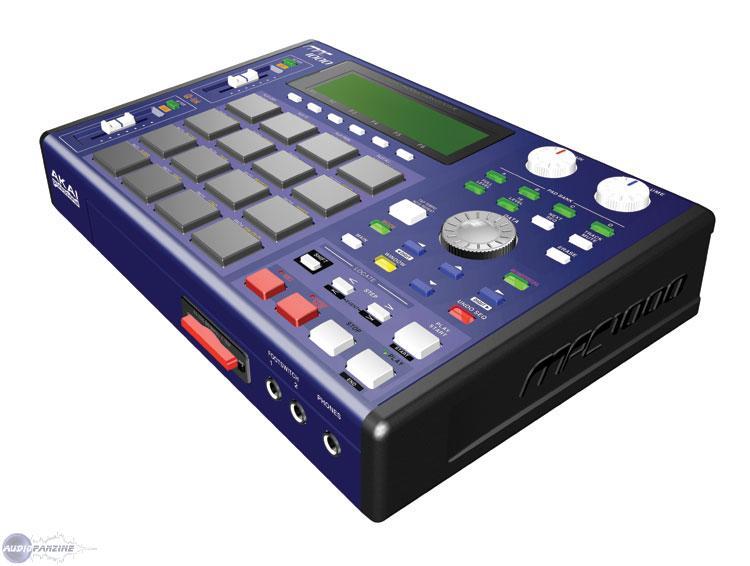By now, everyone was going to be loading soft synths into their laptops, and taking them to the gig instead of keyboards. Oh, and we were also supposed to travel around with personal jet packs and of course, flying cars.
Well, the future doesn’t always turn out as expected, does it? Hardware keyboards are actually having somewhat of a renaissance. Keyboards are a mature field, and there are a huge number of options that offer significant value, whether you’re looking for an inexpensive arranger keyboard like the Casio WK-7500, a full-blown workstation like Yamaha’s Motif XF series, something special-purpose like M-Audio’s Venom, or even a top-of-the-line, state-of-the-art keyboard like the Korg Kronos or Roland Jupiter-80. Or, maybe you want a separate tone module and keyboard controller . . .
Casio WK-7500 (left) and Korg Kronos (right).
But all these options can be overwhelming—how do you choose the model that’s right for your needs? That’s what this article is all about, so let’s get started.
Self-Contained or Modular?
Before getting into how a keyboard sounds, consider the possible configurations.
Self-contained models have a keyboard and all associated tone-generation circuitry in a single enclosure. They are likely to include controls that allow changing the sound in real time, which can add expressiveness to your playing.
Note the control surface on Yamaha’s Motif XF, a complete workstation with an onboard sequencer.
They’re also easy to set up. Furthermore, self-contained devices called workstations include multitrack sequencers, which record what you play and can build up complete arrangements from the onboard sounds. This is a great feature for songwriters. Stage pianos are another type of self-contained model, which tend to contain more “bread and butter” sounds like strings, pianos, bass, etc. than more exotic synth timbres. The Nord Stage Piano is a fine example of this type of keyboard.
A modular setup has a separate master keyboard (like M-Audio’s Axiom and Axiom Pro series) and one or more tone generator modules that connect via a MIDI cable.
M-Audio’s Axiom Pro line of controllers doesn’t make sounds, but controls hardware tone modules and software synthesizers.
The keyboard’s MIDI output provides a digitally-encoded version of what you play on the keyboard. The tone module’s MIDI input responds to this data, and plays the appropriate notes. To change your sound, keep your master controller and simply replace (or supplement) the existing tone module.
Modular setups are also ideal for using alternate controllers, such as a guitar or bass outfitted with a MIDI-compatible pickup (e.g., Roland GK series), or a strap-on remote keyboard you wear like a guitar (as made by Roland). If you’re not a keyboardist, why pay for a keyboard you won’t use?
Many tone generators mount in a standard 19-inch wide equipment rack. If you like to tweak controls, check out “tabletop” units (like Dave Smith Instruments Tetra or the Access Virus TI Snow). These have no keyboard but offer readily accessible controls; set them up next to your keyboard, and you’ll have plenty of options for real-time sound tweaking. Note that modular setups require more MIDI savvy to be used to their fullest potential, whereas self-contained synths are “plug-and-play.”
Within these categories, there are sub-genres. One self-contained device, the “groove box” (exemplified by the Akai MPC series) is designed primarily for dance, rap, hip-hop, and other groove-based music. While somewhat more like an overachieving drum machine than a keyboard, a groove box has many elements in common with synthesizers.
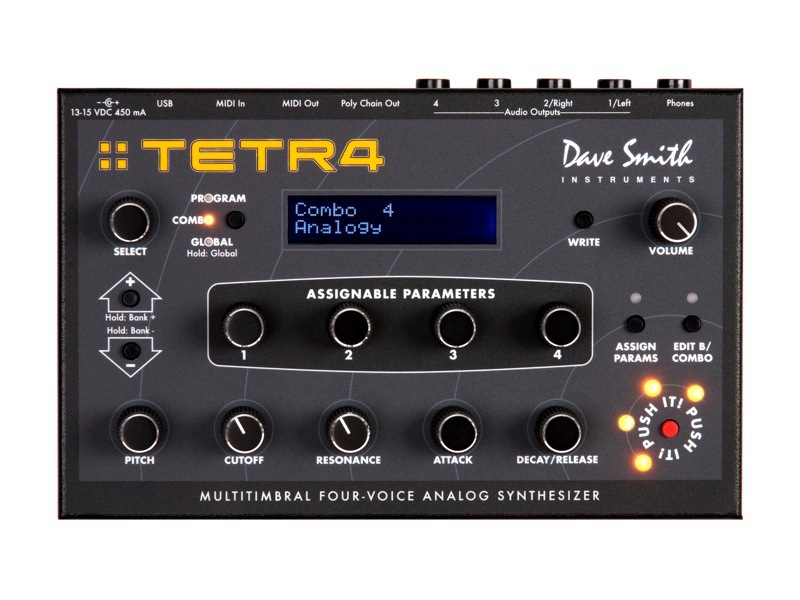
Dave Smith’s Tetra is a compact, tabletop synthesizer; Akai’s MPC1000 is in the middle of their MPC line.
Keyboard Action
Weighted keyboards feel more like a real piano, as the keys offer a slight resistance to your playing. Some electronic pianos even reduce the resistance as notes get higher—just like a real piano. However, weighted keyboards cost more than unweighted keyboards (and not surprisingly, weigh more too!); and some players prefer unweighted models, because it takes less effort to work the keys.
Most synths sport at least a 61-note (five-octave) keyboard, but some extend to 88 keys. Conversely, some analog “lead” synths may be limited to a three-octave keyboard. Fortunately synths can transpose, so a smaller keyboard range can shift up or down as needed.
There are even mini-keyboards designed more for portable applications made by Alesis, M-Audio, Arturia, and many others. These typically have a one, two, or three-octave keyboard with pitch bend, modulation wheel, and programmable controls suitable for varying synth parameters. Although designed mostly for use with computers, for bass or lead parts these can be well-suited to driving a tone generator module.
Types of Synthesis
Companies enjoy assigning proprietary names to synthesis processes, like “Advanced Whoopdedoo Synthesis” or whatever—but they’re just names. Here are the main types of synthesis engines.
Analog synthesis. This is the “old school” synthesis that dates back to the early Moog and Buchla synthesizers. Nowadays, except for some high-end products like the Moog Music Voyager series, it’s more likely that an “analog” synth actually uses digital technology to emulate analog sounds, like the Roland Gaia synthesizer. Although analog synthesizers can imitate acoustic or electric instruments, their specialty is making “impressionistic, ” synthetic sounds.
FM synthesis. This uses all-digital technology and has a clearer, brighter, less “warm” sound than analog synths. FM synthesis fell out of favor in the ‘90s after years of overuse, but is making a comeback in software synthesizers (like Native Instruments’ FM8) because it still provides useful, unique timbres.
Sample-based synthesis. Samples are recordings of actual instruments that are assigned to notes, which you then trigger with the keyboard. While samples can create realistic instrument sounds, it can take more work to wring expressiveness out of what is essentially a “snapshot” of a sound. Pluck a string ten times; each time the sound will be subtly different. A sample gives the same sound every time.
Several advancements help make samples more expressive, such as using samples played with different dynamics. Striking a key softly triggers the “soft” sample; hitting harder triggers the “loud” sample. The more dynamics-sensitive samples per key, the more satisfying the sound. Another option is to have multiple samples of the same note, and hitting successive notes chooses different samples.
Another improvement is adding synth-type circuitry to modify the samples. For example, a lowpass filter can reduce a sound’s high frequencies. If the filter frequency responds to the dynamics of your playing, then the sound can get brighter with loud notes, which is characteristic of many acoustic instruments.
Modeling. This creates a computer algorithm of an instrument, so technically it’s synthesizing a sound. However, the physics of brass, plucked strings, etc. are well known and if the model includes enough variables, it’s possible to obtain sounds that are as realistic as sampling but aren’t limited to being “sonic snapshots.” Most virtual analog synthesizers use modeling.
All together now. Some keyboards combine multiple synth engines, typically sampling and modeling. Korg’s Kronos takes this to an extreme, with nine different synthesis engines.
And Now, Our Main Feature(s)
A keyboard’s spec sheet contains a huge number of terms. Here are explanations of some of the most important ones.
On-board sequencer
A sequencer records your keypresses and controller motions, thus allowing you to record and play back compositions. For songwriting, this is great, and often gets ideas down faster than a conventional recording setup. The two most important characteristics are number of tracks (typically 8 to 32), and the number of events the sequencer can store. Note that an “event” can be a single note, so a figure like 10,000 events might seem like a lot. But moving a modulation wheel or lever from minimum to maximum might generate a hundred or more events. The more events a sequencer can store, the better.
Polyphony
This defines the number of voices that can sound simultaneously (the reason we don’t say “notes” is because technically, a voice may play back more than one note at a time, e.g., a parallel fifth). 64, 128, 256, and even more voices are common. This might seem strange—after all, you have only ten fingers. But with a piano sound, notes sustain in the background, which uses up voices. Also, if driven by a multitrack sequencer, more polyphony allows fuller arrangements by allowing more notes for each track.
Multi-timbral operation
This expresses the number of different sounds that a keyboard can generate simultaneously, and is an important spec for keyboards with on-board sequencers, or that you plan to drive with an external MIDI sequencer (e.g., a computer-based program). Most multi-timbral keyboards can do 16 different sounds simultaneously—one for each of the standard 16 MIDI channels.
Polyphony and multi-timbral operation are complementary: to play back lots of simultaneous sounds, you need lots of voices available for them.
Sample ROM
Sample-based synths store their samples in non-volatile ROM chips. Generally, more ROM capacity means either more sounds to choose from, or better quality versions of a lesser number of sounds. Back in the day, four-megabyte sound ROMs used to be considered big—compare that to the Motif XF, which has over 700MB of sounds.
Sample import
Several sample formats have evolved: the WAV file format for Windows, AIFF for the Mac, and sample formats specific to particular manufacturers (Akai’s format, while ancient, remains viable). The more formats a sampler (or synth with sample expansion) can recognize, the better but these days, most manufacturers are standardizing on WAV format files.
Real-time controls
Almost all synths have a pitch bend wheel and modulation wheel or lever (the latter might add vibrato, change tone, or other functions, depending on how the sound is programmed). To this basic roster others might add ribbon controllers (slide your finger along a ribbon strip to change a parameter value), data sliders, footpedal options, a joystick, etc. But many synthesizers take this concept one step further by including assignable faders, switches, and knobs that can (with suitable templates) control parameters in popular DAWs. Probably the best example is the integration between Yamaha synthesizers and Steinberg’s Cubase, as Steinberg is a division of Yamaha and there seems to be a lot of communication going on between the two divisions.
Storage
Options for storing sounds and sequences vary. Many synths now include USB ports so storage can be done to thumb drives, or even hard drives that connect to USB. Yamaha’s Motif XF series has the option to add up to 2GB of onboard, flash memory for storing your own sample sets in non-volatile memory.
Hard disk or RAM recording
If the keyboard has a hard drive, and can sample, sometimes you can record tracks of vocals, guitars, etc., just like a computer-based hard disk recording system. This is also possible with some synths that are RAM-based. Now we’re talking serious production – a keyboard like this blurs the line between musical instrument and recording studio.
Onboard effects
Most keyboards include at least rudimentary effects like delay and reverb, but some go much further, including multiple effects that can be used as insert, send, and master effects—just like a mixer.
How effects interact with the program or sequencer varies. Usually, you can store a particular effect or set of effects with a particular program. But suppose you have a sequence with multiple instruments, or a multi-timbral setup. Insert effects process individual tracks. Some keyboards also have master effects, which alter any audio, from any source, that appears at the output. Tone controls are good candidates for a master effect so you can, for example, brighten up the high end a bit or make the bass rumble. Send effects (also called Aux effects) can add a particular effect to multiple channels of your choice, so they’re somewhere between insert and master effects in terms of how they process the sound.
Interactive algorithms
The most sophisticated implementation of this concept is called KARMA, and is available for Korg and now, Yamaha keyboards. It’s hard to explain, but basically, the keyboard analyzes your playing and adds enhancements where appropriate. For example, a bass line might acquire pitch bend and portamento in selected places, or acoustic guitar parts may have “strums” added in for a more realistic sound. Other keyboards, like the Jupiter-80, perform their own type of enhancements (Roland calls the technology “SuperNatural”) that are also intended to enhance expressiveness. This type of “artificial intelligence” makes a difference in how inspiring an instrument can be, as it becomes more of a partner in the music-making process.
Roland’s SuperNatural technology incorporated in their Jupiter-80 adds exceptional expressiveness.
Sample slicing
This feature is found mostly in groove boxes, but is also incorporated in some keyboards, such as the Motif. The goal is to allow digital audio to follow tempo if the sequencer tempo changes. This works by slicing samples into smaller pieces, typically at prominent attacks or percussive transients. The sequencer triggers these pieces individually, so if the tempo slows down, the triggers occur further apart and the slices play back further apart to follow the beat. Conversely, with faster tempos, the slices trigger closer together.
Arpeggiator
An arpeggiator triggers notes sequentially in a pattern (sometimes arpeggiators are polyphonic, and can trigger several parallel patterns). For example, suppose you’re holding down a C major chord with the notes C4-E4-G4-C5. In “up” mode, these might play as C4-E4-G4-C5-C4-E4-G4-C5 etc. In down mode, it would do the reverse, playing C5-G4-E4-C4-C5-G4-E4-C4 etc. Other modes might be up/down, random, or extended, where the notes you hold down repeat over several octaves.
Arpeggiators are used a lot in dance and “new age” music, and to add flourishes in just about any type of music.
Expandability
Given the dizzying rate of technological progress, expandability is key to preserving your investment. Here are some of the possibilities.
Expansion card slots. Sample-based synths have a fixed complement of sounds. Adding cards expands this palette. Cards are typically genre- or instrument-specific (e.g., dance music, ethnic instruments, hip-hop, pianos, etc.).
USB or FireWire port. With all recent Mac and Windows machines sporting USB ports, they’re used for everything from file transfers between keyboard and computer to providing all the functions of a stand-alone MIDI interface so a program running on the computer, such as a sequencer, can communicate directly with the keyboard. Sometimes these even provide audio interface functions, especially if the keyboard has an external input.
Expandable sample memory. More sample memory lets you store larger numbers of longer samples before you run out of room. Expansion usually consists of inserting common, relatively inexpensive memory chips used in desktop computers.
http://www.harmonycentral.com/servlet/JiveServlet/showImage/102–2181–26–16767/M3+Editor.jpg
Audio input. This can be used for recording your own samples, or tracks into a sequencer, and can also provide signals that the synthesizer can process.
The Editor for Korg’s M3 makes it easy to create sounds, or use it as a plug-in within your DAW. Click to enlarge.
Companion software. To simplify creating your own sounds, some keyboards come with Editor software. This puts parameters on-screen and lets you edit them, which is often a faster and more direct approach than going through menu screens on the keyboard itself. What’s more, some software lets you treat the keyboard as a VST or AU plug-in within your DAW.
The Key Issue
Let’s close with the most important issue in choosing a synth: whether you have good chemistry with it. One of my favorite “vintage” synths is Peavey’s DPM-3, which ceased almost two decades ago. It has a measly 16 voices, virtually no expansion options, and a user-hostile sequencer. But I get sounds with it that no other keyboard can produce, and it’s the “secret ingredient” in many of my tunes.
If you fall in love with a keyboard, trust your instincts. Remember, these are musical instruments, not just technological marvels. Some of the best synth parts ever recorded were played on a single voice, non-multitimbral, non-expandable Minimoog. If you’re trying out a keyboard and it doesn’t inspire you, move on—even if it has the most amazing spec sheet you’ve ever seen.
This article was originally published on Harmony Central. Reprinted with permission.

